To be honest, when I pictured Germany I always seemed to conjure up images of cold concrete buildings, sterile trains, brooding castles and contemporary art that’s more jarring than inspired. Well, I was wrong. Dead wrong. Well played, Deutschland.
I spent nearly two weeks in the incredibly beautiful state of Bavaria, home to the great metropolis of Munich. The city is in southern Germany, close to the border it shares with Austria, the Czech Republic and Switzerland—making it a good base if you’re looking to pop over to Liechtenstein or Salzburg for another passport stamp.
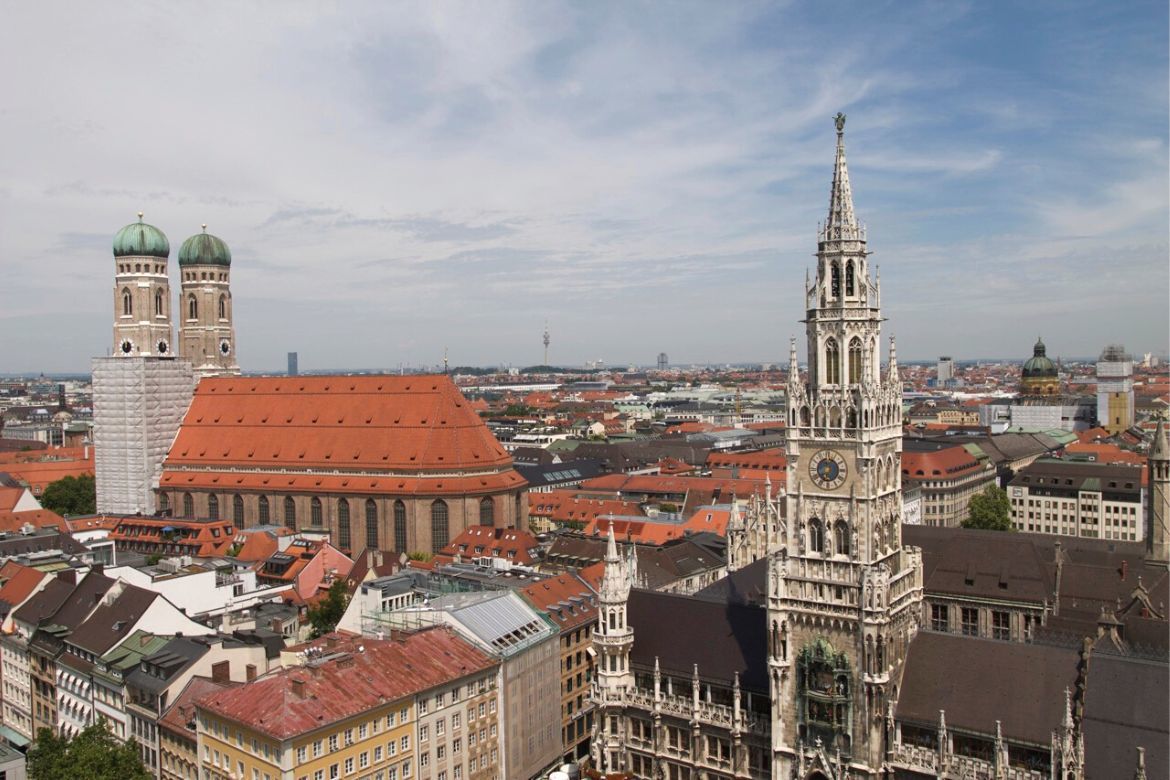
Munich is not only close to landmarks like Dachau and the Bavarian castles, but the city itself also has much to offer travellers—and is much greener than you might think! While Munich itself has many historical buildings, it is also home to a number of parks including the spectacular English Garden.
During a stroll through the Englischer Garten which takes up nearly 1,000 acres of the city, you’ll see swans gliding through a lake, a Japanese tea house and nude sunbathers (!). There are also two beer gardens on site.
The Hofbräuhaus
Speaking of beer, let’s talk about one of Munich’s main tourist attractions—its beer hall. The Hofbräuhaus has been around for more than four centuries, attracting beer guzzlers from around the globe. The expansive restaurant has a staggering 3,500 seats, meaning you won’t ever have much trouble getting in, unless of course it’s Oktoberfest.
READ MORE: 5 tips for surviving Oktoberfest
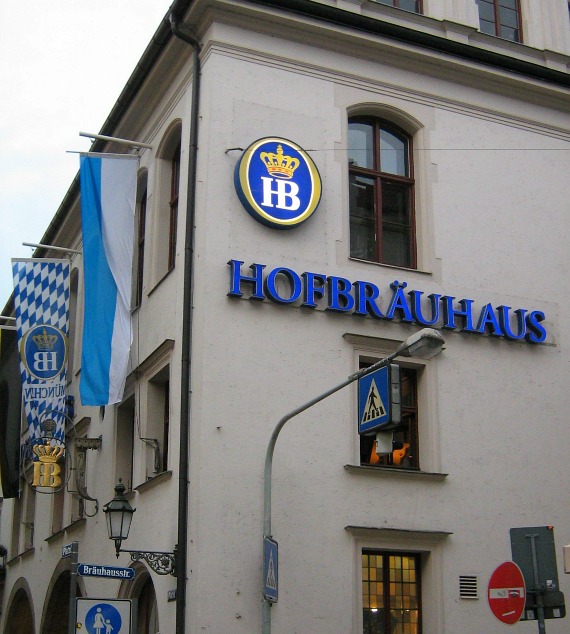
Large bosomed waitresses show off their talents while balancing up to a dozen Steins filled with the Hofbräuhaus’ famous brews, and you’re sure to see an Oompah band or a group of older gents wearing traditional Lederhosen.
The Hofbräuhaus is open every day at 9 a.m. and serves a wide selection of traditional German fare, including sausage platters and suckling pig. Order a Hofbräu Original, which will set you back about 8€. If beer isn’t your thing but you want the experience, order a Radler, which tastes like sweet grapefruit juice as it’s made of half beer, half lemonade.
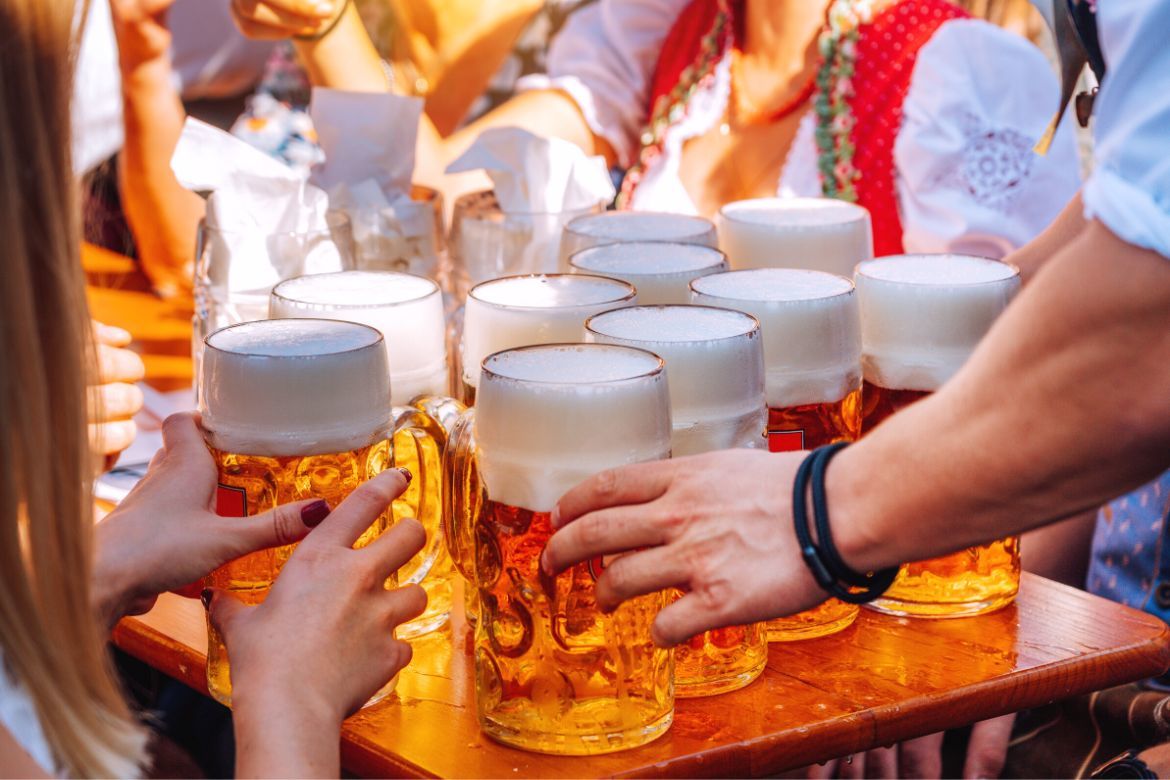
City Centre
To get a feel for city’s history during a trip to Munich, head to the main square called Marienplatz. A large statue is smack dab in the middle of the popular marketplace, called the column of St. Mary which was erected to celebrate the end of the Swedish invasion.
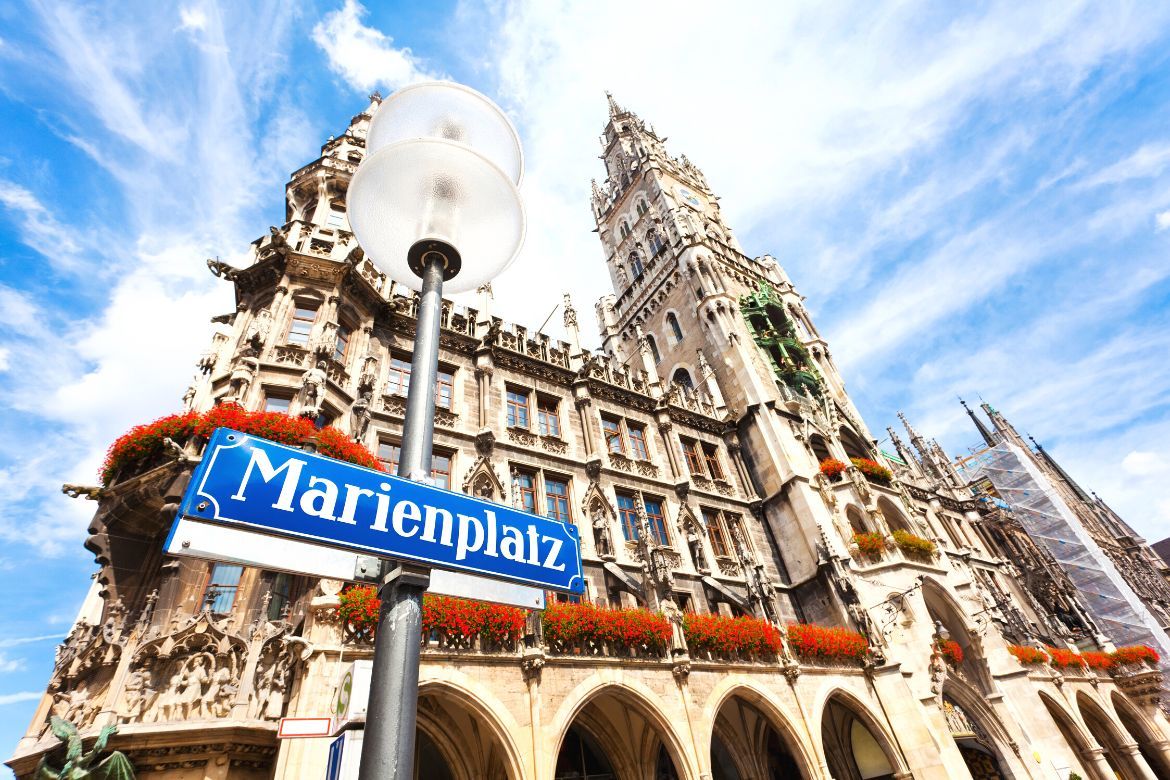
The plaza is anchored by Old City Hall—a gothic-style building with a white façade—and the imposing New Town Hall called Neues Rathaus. Neues Rathaus is much-photographed, and for good reason. The building is about 80 metres high and was also constructed in the gothic style and boasts ornate stonework and stained glass windows.
Visitors flock to the site to get a glimpse of the glockenspiel, which features life-size figures inside the clock that give a performance when the hour strikes 11 a.m., noon or 5 p.m.
Once you’ve wrapped up in the main square, stroll around the rest of downtown to shop in one of the many department stores or grab a seat on the patio to sample the best food in Munich and order a crisp Riesling—Germany is famous for its sweet white wine! This would be a great time to mention that if you’re looking to pick up a bottle to take back to your hotel/dorm/tent, head to the grocery store where you can pick up some great bottles for as cheap as 4€.
If you’re a soccer/football fan, you’ve come to the right place. Germany is soccer crazy, and I was lucky enough to time my trip with World Cup. Roadways were transformed into pubs, TV sets carted out from restaurants and flags litter the laneways as everyone comes out to cheer their team on. Get ready for a huge celebration in the streets if Deutschland wins!
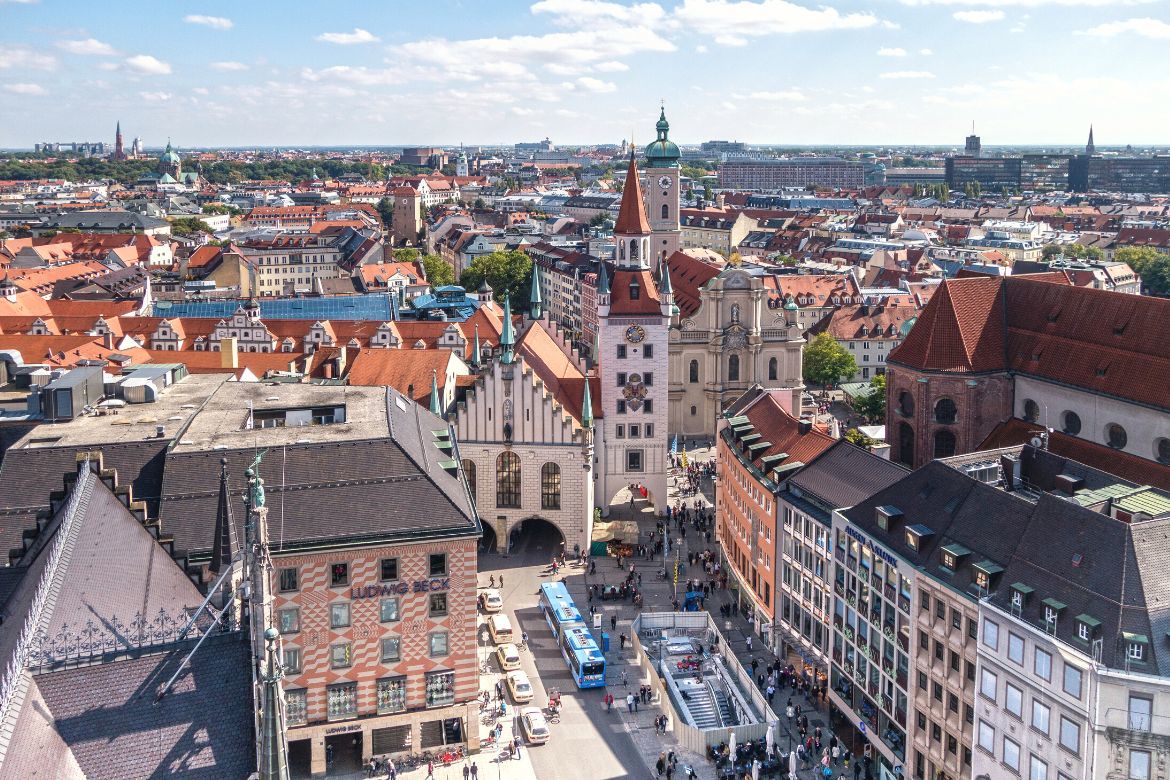
Getting Around
One thing Germany is famous for is its incredible train line, and Munich is no exception. There are few places in Europe that you’ll find stations and train cars so quiet, clean and organized. The whole system thrives on precision, which means you’ll rarely get detoured due to incidents like a strike, which are frustratingly common in other countries like Italy.
It’s extremely easy to get around the country by rail, and you can also hop on the train to get to places like Salzburg, Austria which is only about an hour away. My only recommendation? Don’t act terribly silly when you board—the Germans don’t seem to appreciate any sort of noise during their commute.
Perhaps the best way to get around (if your budget allows) is by car. Germany is famous for its automakers, and BMWs and Mercedes’ are hardly considered luxury as they’re so common in the country!
No trip would be complete without a cruise down the Autobahn, the high-speed highway which connects much of the country. Despite being multiple lanes wide, there is no speed limit! Even if you go the recommended 130 km/h, it doesn’t feel that fast as the roads are so well maintained, and you likely won’t have to watch out for crazy drivers. It’s also safe: traffic fatalities in Germany have seen a major drop since 1990, meaning you can sit back and enjoy the ride.
There are also more than a dozen magnificent Bavarian castles near Munich, which is a popular day trip.
Book one of these castle tours from Munich
YOU MIGHT ALSO ENJOY:
- How to rock a whirlwind tour of Berlin, Germany
- Exploring the crooked houses in Hann Münden, Germany
- Why you should visit Wilhelmshöhe Park in Kassel, Germany
This post may contain affiliate links, which Globe Guide receives compensation for at no additional cost to you.

Pingback: Top 10 things to keep in mind if you’re heading to Europe | Globe Guide
Pingback: Gallery: Germany | Globe Guide
Pingback: The rolling hills of Austria | Globe Guide
Pingback: Top sights in the City of Lights: Paris, France | Globe Guide
Pingback: The castles of Bavaria, Germany | Globe Guide
It does sound interesting. I will have to take a quick trip to Munich now. I am in Stuttgart right now so I believe it’s just a few hours away.
Thanks for the info.
Perfect! That’s the great thing about Europe…everything is just a quick drive away!
Pingback: Exploring the crooked houses in Hann Münden, Germany
Pingback: Rothenburg ob der Tauber, Germany: The town that time forgot
Pingback: 5 tips for surviving Oktoberfest